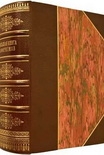Still Life Melissa Milgrom (notion reading list .txt) 📖

- Author: Melissa Milgrom
Book online «Still Life Melissa Milgrom (notion reading list .txt) 📖». Author Melissa Milgrom
At the museum, David got to open all the doors of the most amazing cabinet of curiosities in the world. He got to visit the museum's gargantuan freezer ("As big as this whole building!") to select, for instance, penguin skins from the quarry collected on one of Robert E. Peary's polar expeditions. While inside, he'd steal a glance at the huge stacks of folded elephant skins and the full-mounted tigers and pandas. Soon he befriended the collections manager of ornithology, who let him select his own skins from the vast storerooms filled with more than a million preserved birds.
His primary pleasure, however, was learning how a diorama is made. Dioramas are three-dimensional time capsules of vanishing landscapes. Like meticulous stage sets, they simulate reality with dreamlike precision. Dioramas depict places in the world that are no longer as beautiful or as "natural" as they used to be. From 1890 to 1940, dioramas were the primary way American museums educated the public about the ecological interdependence of species and their habitats. The AMNH's dioramas were (and still are) considered the most magnificent in the world, and David has repaired and restored them all.
His favorite diorama is the Yosemite Valley Group in the Hall of North American Mammals. It's not the coyotes or the Anna's hummingbird that draws him to it, but the background painting of the meandering Merced River as it flows through Bridal Veil Meadow on a bright June morning. The river winds down from glacial mountains and forms a clear pool in a landscape of azaleas, rhododendrons, and mariposa lilies. Wilson painted it in 1946 after he spent two days in Yosemite searching for the perfect spot. "By God, it looks like if you walked in there, you'd get wet!" David exclaims. "I mean, you can see through it! You can see the bottom! The effect is so fantastic!"
The first diorama David worked on was the Japan Bird Group in the Hall of Birds of the World. One day he described the process for me. As taxidermist, David was an integral part of the exhibition team, which included a background painter, a foreground artist, and an ornithologist who oversaw the scientific accuracy of the display, selected the species, and approved the final mounts. Most of the work took place directly inside the diorama shell, as they installed the exhibit from the curved back wall to the front window.
While the background artist painted the scenic backdrop (using a grid system devised by Wilson for translating two-dimensional studies and photographs onto rounded contours), David was up in the fifth-floor studios animating pheasants and sparrows in a way that brought the ornithologist's vision to life. After the background was painted, the foreground artist added layers of wire, burlap, and plaster to mimic the surface of the land. As the artist carefully put his mosses, grasses, and shrubs on top of his topographical stage set, David installed his birds in batches, as specified by the ornithologist. Finally, after everything, including the intricate lighting, was adjusted to suggest sun and shadow, the case was tightly sealed with a thick plateglass window, tempered to reduce glare. "It was a beautiful exhibit, a beautiful diorama," he says.
Museums often credit their patrons, scientists, curators, and artists by posting their names in their grand galleries. For the Japan Bird Group, the museum listed, among others, the background painter, the foreground artist, the person who collected the birds—everyone, it seemed, except David. "They didn't have my name! You know, the taxidermist!" he says. "And you look at the damn thing—I'm sorry—and you look at the diorama, and you see the birds. Who cares about what kind of moss they have?... I complained to the birdman—the ornithologist, who I worked with more closely than anyone else,...and after a while, they did change it and put my name on the group."
While David was telling me this, Bruce flushed, then said, "Can I interject? This points to a couple of things. One is that the taxidermist was overlooked. They did admire his expertise, but he wasn't the scientist, and he wasn't asked to go on the collecting expedition, and his name was often left off of the diorama. And yet the birds were the stars of the show!"
Other bird groups followed, including the Chilkat River Bald Eagle Group in the Hall of North American Birds. David had to create the illusion that the eagles were soaring down into the river to catch salmon. To capture the drama of eagles in flight, he devised a method for inserting threadlike steel wires into their pinion feathers, so the birds would appear to be resisting the wind.
In the late 1960s, he worked on the first renovation of what is now called the Millstein Hall of Ocean Life. When the hall first opened in 1933, its dioramas depicted the fragile marine habitats of walruses, elephant seals, and other large mammals hunted to near extinction for their fur, their environments decimated by the petroleum industry. In 1969, the museum gutted the hall, replacing its original seventy-six-foot great blue whale model (designed in 1908 by the legendary paleontologist Roy Chapman Andrews) with the ninety-four-foot fiberglass model that dominates the hall today. David made the replacement whale's huge fake eye. Mostly, however, he recast plaster fish in lightweight fiberglass so they'd





Comments (0)